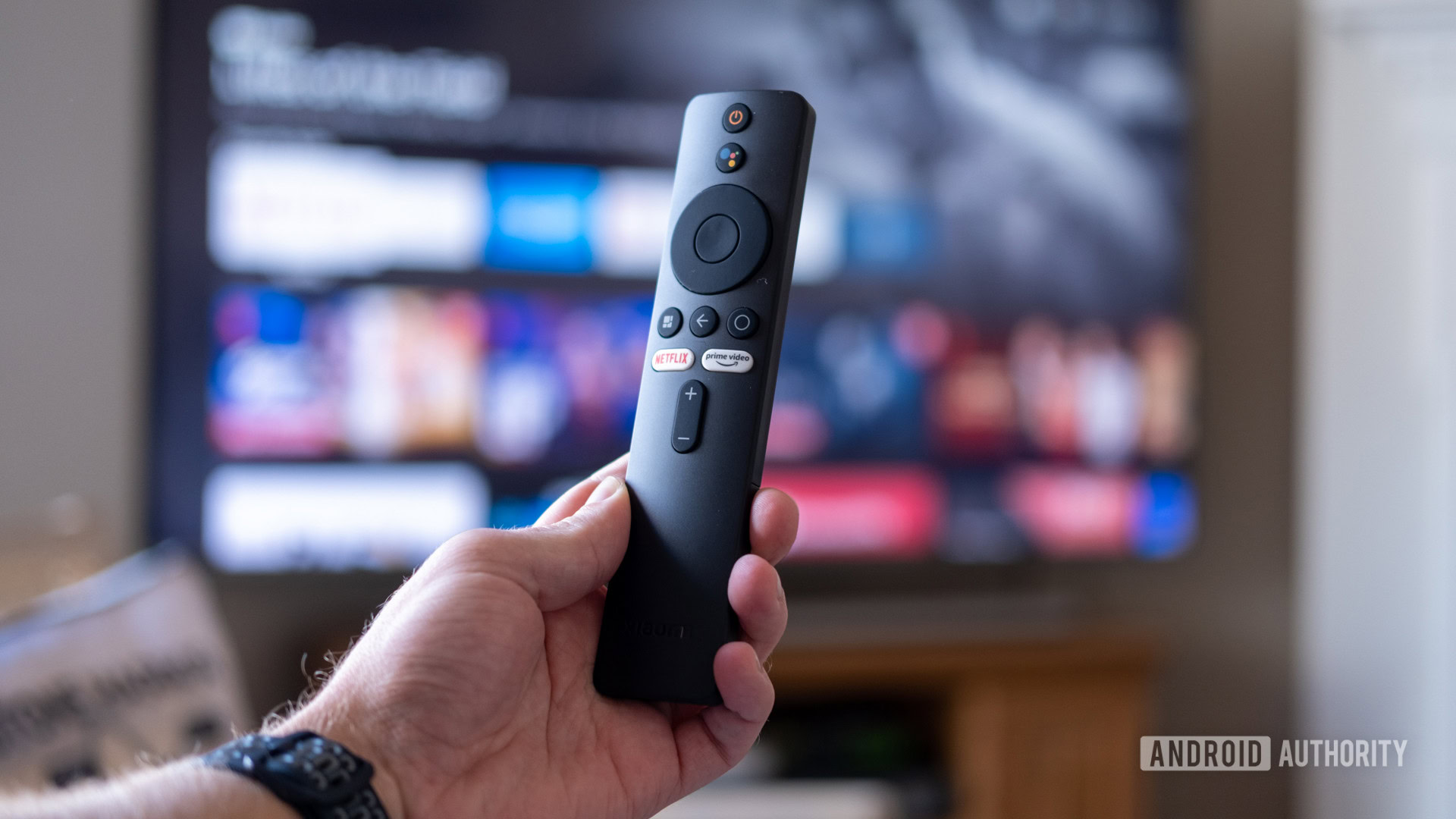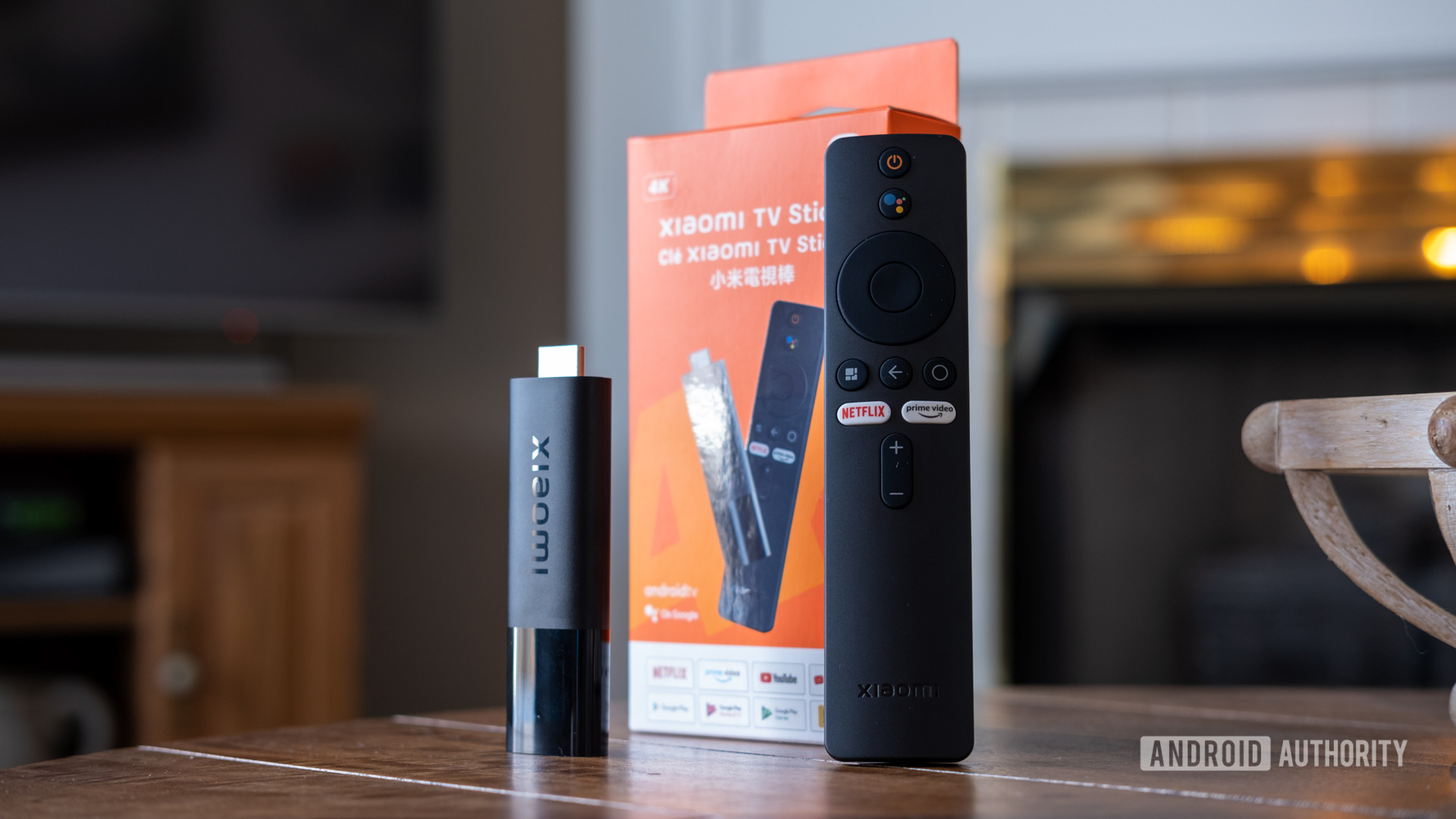The world of video streaming devices can be challenging to dive into. It already features established names like Roku and Amazon’s Fire TV whose streaming sticks, in particular, have proven popular for those looking for a quick plug-and-play media fix. Last year, Xiaomi failed to blow us away with its debut streaming stick but now the Chinese giant is back with a fully revamped successor. This is our Xiaomi TV Stick 4K review.
What you need to know about the Xiaomi TV Stick 4K
Ryan Haines / Android Authority
- Xiaomi TV Stick 4K: €59.99 (~$68)
Xiaomi is no stranger to Android TV streaming hardware thanks to its various Mi Box devices, but the TV Stick 4K marks the company’s second attempt at nailing the streaming stick form factor after 2021’s underwhelming Xiaomi Mi TV Stick. Thankfully, the new model boasts improvements all across the spec sheet. It’s slightly larger than the original Mi TV Stick, measuring 106mm long, 29mm wide, and 15mm tall. That space isn’t wasted, as the new model packs 2GB of RAM, Bluetooth 5.0 support, and an updated CPU and GPU. The Xiaomi TV Stick 4K plugs into your TV via an HDMI port and features an opening for the micro-USB power cable.
Xiaomi includes the streaming stick, the Google Assistant remote, a wall block, and a power cable in the box. You’ll also find an HDMI extender if you’re light on space, though there are no AAA batteries for the remote.
See also: The best video streaming services
Xiaomi’s key upgrade is right there in the name — 4K streaming quality. It’s a significant leap from the previous limit of 1080p, and it comes alongside Dolby Atmos, DTS HD, and Dolby Vision support. The Xiaomi TV Stick 4K runs on Android TV 11, while the original launched on Android TV 9. You can cast to the TV Stick 4K from your Android device via Chromecast built-in support, though Xiaomi’s latest streaming device does not support Apple AirPlay.
The Xiaomi TV Stick 4K remote is unchanged from the previous generation, with the Google Assistant button front and center for voice commands. It packs two hotkeys to launch Netflix and Amazon Prime Video, which you can not remap. The remaining buttons are primarily for navigation and volume control.
Xiaomi’s TV Stick 4K launched in Spain, France, Italy, and Germany on January 21, 2022. Xiaomi hasn’t provided a release date for the US or UK so far, but we typically see its streaming devices hit both markets. We will add further pricing and availability information when we know more.
What’s good?

Ryan Haines / Android Authority
Xiaomi seems to have nailed down the right mix of buttons for its TV Stick 4K remote. It’s unchanged from the last version, but it’s best to keep something when it works. Two hotkeys are plenty, given that not everyone subscribes to a whole heap of services. I also found that the Google Assistant button worked well at picking up commands clearly and quickly.
The Android TV 11 layout is one of the more enjoyable streaming UIs on the market right now. There may be a large ad at the top, but this isn’t anywhere near as aggressive as what you see on Amazon or Roku’s software. It’s also really easy to jump into the most popular Netflix series’ or your personal recommendations, and the only bloatware that Xiaomi pushed on me is the AirConsole app — which you can immediately delete. It’s more like an arcade for your TV and packs some enjoyable games. If you don’t have Netflix, you can adjust your home screen settings to feature your preferred streaming services with just a few clicks, too.
Xiaomi’s Android TV 11 interface is clean and simple with minimal bloat.
We can’t talk about the good without diving into Xiaomi’s new internals. We had issues with many aspects of the Xiaomi Mi TV Stick, but the most notable was the poor performance. Xiaomi has since doubled the RAM to 2GB, which feels like a better match for the more power-efficient quad-core processor and boosted GPU. I didn’t notice lag or stuttering throughout my usage, and last year’s laggy Google Assistant is much faster. Apps open and close quickly at the press of a button. The move to Bluetooth 5.0 from 4.2 also ensures longer-range communication and slightly faster transfer speeds.
Of course, the most significant change is support for 4K streaming over the previous cap at 1080p. You only get the full effect with compatible content and you’ll need a 4K TV but even if you have neither right now you are better off future-proofing your setup in case you decide to upgrade.
What’s not so good?

Ryan Haines / Android Authority
I generally liked Xiaomi’s TV Stick 4K remote, but the lack of AAA batteries in the box is stingy. I might also say that the remote itself is too long. There’s a lot of extra space below the volume button that goes completely unused.
The buttons may take some adjusting as well. For example, there’s no traditional home button at first glance. Once you start exploring, you realize the home button is the circle above the Prime Video button, but there’s no explanation in the box. It’s a personal preference, but the home button makes more sense in the center of the remote, while the back button feels more at home to one side, à la Android controls.
The buttons take some getting used to — once you find some AAA batteries, that is.
We’ll continue to mention this every time we see it, but why did Xiaomi choose a micro-USB connection for the power? This isn’t exclusive to Xiaomi as Amazon and Roku are also guilty here. Almost all other modern devices (including other types of streaming devices) are slowly but surely moving to USB-C, and it’s time for streaming sticks to do the same. I’m now at a point where my USB-C cables far outnumber my micro-USB cables, yet the TV Stick 4K adds one more to the mix.
Xiaomi TV Stick 4K review: Should I buy it?

Ryan Haines / Android Authority
If it’s available in your region, the Xiaomi TV Stick 4K offers solid value for the money. It delivers crisp content with a straightforward interface, and the upgrades to both RAM and memory make a big difference from the last model. Xiaomi learned lessons from its original Mi TV Stick, and while the 4K version doesn’t leap past the competition, it’s certainly in contention. The Dolby Atmos and Dolby Vision support are great for movie nights if you have a fancy home entertainment setup, even if the lack of batteries in the box is a head-scratcher.
Overall, the Xiaomi TV Stick 4K doesn’t do a lot to stand out with any flashy extra features, but it’s a very capable Android TV-powered streaming stick available at a reasonable price. It also represents a big step up from the brand’s previously underpowered, underwhelming streaming devices.
Xiaomi has delivered a capable device that’s great for anyone that wants a simple, Android TV-powered streaming stick for a reasonable price.
While the Xiaomi TV Stick 4K is a very good option for anyone that wants a simple, Android TV-powered streaming stick, there are other great options out there. The best rival for Xiaomi’s stick is the Chromecast with Google TV ($49.99). It remains our favorite video streaming device, and it’s the only option with the fancy Google TV interface. The Chromecast with Google TV is also slightly more affordable and includes Google’s first-ever remote along with a USB-C power connection (see, it can be done!).
There are also strong competitors from Roku and Amazon if you’re not so keen on the stripped-back-to-basics experience of Xiaomi’s stick. Both the Roku Streaming Stick 4K ($49.99) and Fire TV Stick 4K Max ($54.99) pack 4K support with RAM and processing improvements of their own. They offer smaller remotes with more buttons, but you’ll still have to get used to ads in the home interface.

Xiaomi TV Stick 4K
Xiaomi’s updated streaming stick packs plenty of improvements. You can tap into 4K content, enjoy Android TV 11, and do more with boosted RAM and memory.

